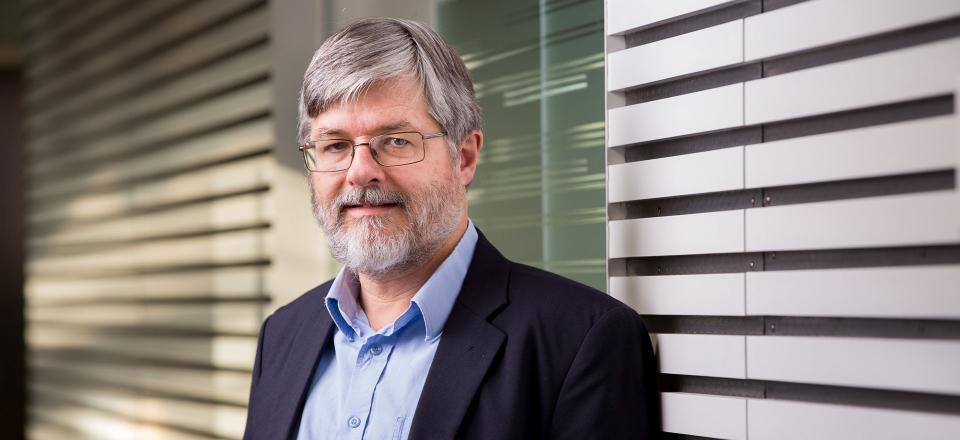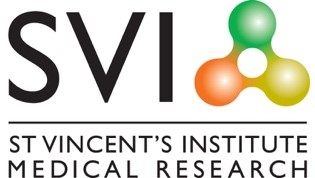Media Release: Researchers discover why patients develop resistance to commonly-used cancer drug

20 June 2019
 Researchers from St Vincent’s Institute of Medical Research (SVI) in Melbourne Australia, are part of an international team of collaborators that has made a discovery that may lead to more effective treatment and less side effects for a number of cancers including neuroblastoma, a cancer that occurs most commonly in infants and children under 5 years of age.
Researchers from St Vincent’s Institute of Medical Research (SVI) in Melbourne Australia, are part of an international team of collaborators that has made a discovery that may lead to more effective treatment and less side effects for a number of cancers including neuroblastoma, a cancer that occurs most commonly in infants and children under 5 years of age.
“Cisplatin was discovered in 1845 and licensed for medical use in 1978/79; it is a widely-used cancer drug that is quite successful against a wide range of cancer types ” said Professor Michael Parker, a National Health and Medical Research Council (NHMRC) Research Fellow. “However, many patients experience bad side effects, and most patients eventually develop a resistance to it, and we wanted to understand why.”
Cisplatin works by interfering with the process of DNA replication (the process by which a single double-stranded DNA molecule is copied to produce two identical DNA molecules), killing the fastest dividing cancer cells. It is from a family of platinum-based drugs, informally called platins. Almost 50 per cent of people receiving chemotherapy treatment are being treated with a platin drug.
What Professor Parker and joint first author Dr Lorien Parker, as well as the study collaborators from the Bio21 Institute, University of Melbourne and researchers from Italy, Singapore and Switzerland identified, is an enzyme that inadvertently leads to cisplatin resistance.
“GST enzymes are found in every cell of the body; they are ‘good guys’ that protect us from toxic molecules which come from a variety of sources including the food we eat, smoking and exposure to UV radiation. The enzymes attack toxic molecules which are then pumped out of the cell and body.
“Using the process of X-ray crystallography, which is a technique used to determine the molecular structure of proteins, we were able to identify exactly where cisplatin was attaching itself to a specific GST enzyme, called GSTP1. But unlike GST’s normal activity, where it would pump the toxic cisplatin out of the cell, this attachment led to the GST acting like a sponge, soaking up and storing the cisplatin, rendering it ineffective and unable to do its job to prevent the proliferation of cancer cells.
“We are now looking at the design of new drugs that will prevent the GSTP1 enzymes from attaching to the cisplatin, so that this type of resistance is interrupted and cisplatin can continue to kill the cancer cells.”
“Interestingly some of these GST inhibitors we are looking at are metal-based, like arsenic. Most people wouldn’t realise the role ‘precious metals’ play in cancer treatment, but they’ve been used in medicine for thousands of years.”
Media contact: Lisa Kuspira, Media & PR Adviser 0423 011 493
Follow the link for the original article on the St. Vincent's Institute Medical Research site.
Acknowledgements
The work was supported by an Australian Research Council project grant project with major equipment support from the Australian Cancer Research Foundation. Other support included a National Health and Medical Research Council of Australia (NHMRC) Dora Lush Scholarship and an International Centre for Diffraction Data Crystallography Scholarship; provided to Dr Lorien Parker, joint first author, who did her PhD at SVI (obtained in 2009).
Journal publication
The results of this study will be published under the heading "A structure-based mechanism of cisplatin resistance mediated by Glutathione Transferase P1-1," in the PNAS (Proceedings of the National Academy of Sciences of the United States of America) Latest Articles section this week.
About cistaplatin
According to Wikipedia, cisplatin is used to treat a number of cancers.[1] These include testicular cancer, ovarian cancer, cervical cancer, breast cancer, bladder cancer, head and neck cancer, esophageal cancer, lung cancer, mesothelioma, brain tumors and neuroblastoma.[1] It is given by injection into a vein.[1]
Common side effects include bone marrow suppression, hearing problems, kidney problems, and vomiting.[1][2] Other serious side effects include numbness, trouble walking, allergic reactions, electrolyte problems, and heart disease.[1] Use during pregnancy is known to harm the baby.[1] Resistance to the drug, even if only small, can be clinically important since administration of higher doses of cisplatin to counteract the problem can lead to severe multi-organ toxicities.
About neuroblastoma
According to the Neuroblastoma Australia website, neuroblastoma is the most common solid tumour of childhood. It is almost exclusively a childhood cancer occurring most commonly between the ages of 0-5 years.
It is a solid tumour arising from particular nerve cells which run in a chain-like fashion up the child’s abdomen and chest and into the skull following the line of the spinal cord.
The most common site for the tumour to grow is in the abdomen. About 50% start in the adrenal gland above the kidney. Some tumours grow at the back of the chest and occasionally even higher up towards the neck.
Neuroblastoma is a rare disease with about 40 children diagnosed with neuroblastoma each year in Australia. There are no known reasons as to why this cancer occurs and there are no clear environmental links. There are rare cases where neuroblastoma runs in families due to a genetic mutation, but in most cases there is no known genetic cause.
Neuroblastoma may be difficult to diagnose as symptoms often do not become apparent until the tumour has reached a certain size. Even then symptoms may be subtle and similar to other more common non-serious childhood diseases. As a result, it often takes some time before the final diagnosis of neuroblastoma is made. Often parents wonder if they or a doctor should have noticed something sooner, but because it is such a rare disease it is unlikely that a family doctor will ever see a child with neuroblastoma in a lifetime of practice.
Neuroblastoma is a very complex cancer and there are many different types that behave very differently. At one end of the spectrum are benign tumours that may even resolve spontaneously, while at the other end are aggressive tumours with an average survival rate of 40%. The cure rate for these “high-risk” tumours has only improved marginally in recent years but there is clear hope that this rate will change with some new drug discoveries coming through.

